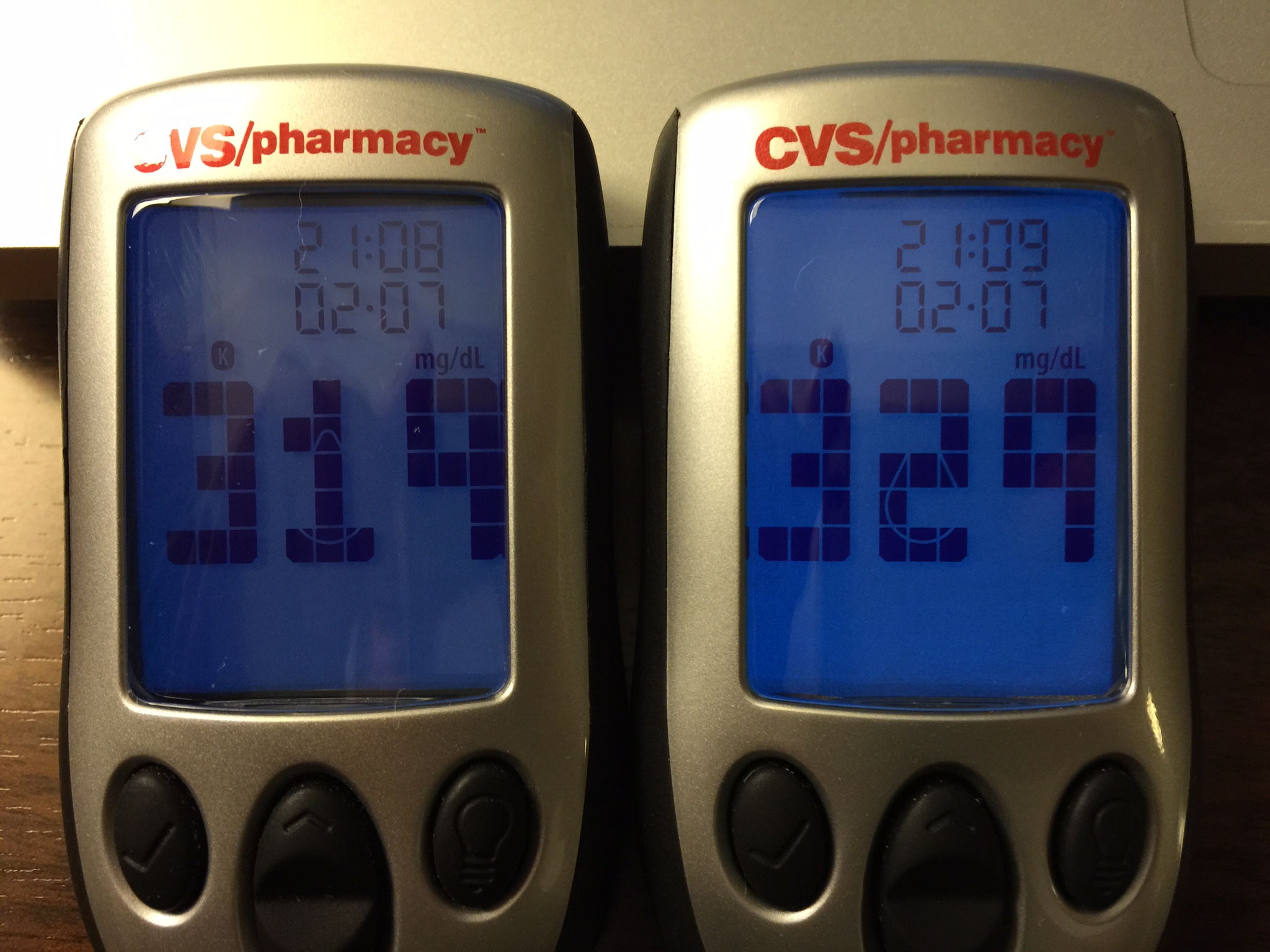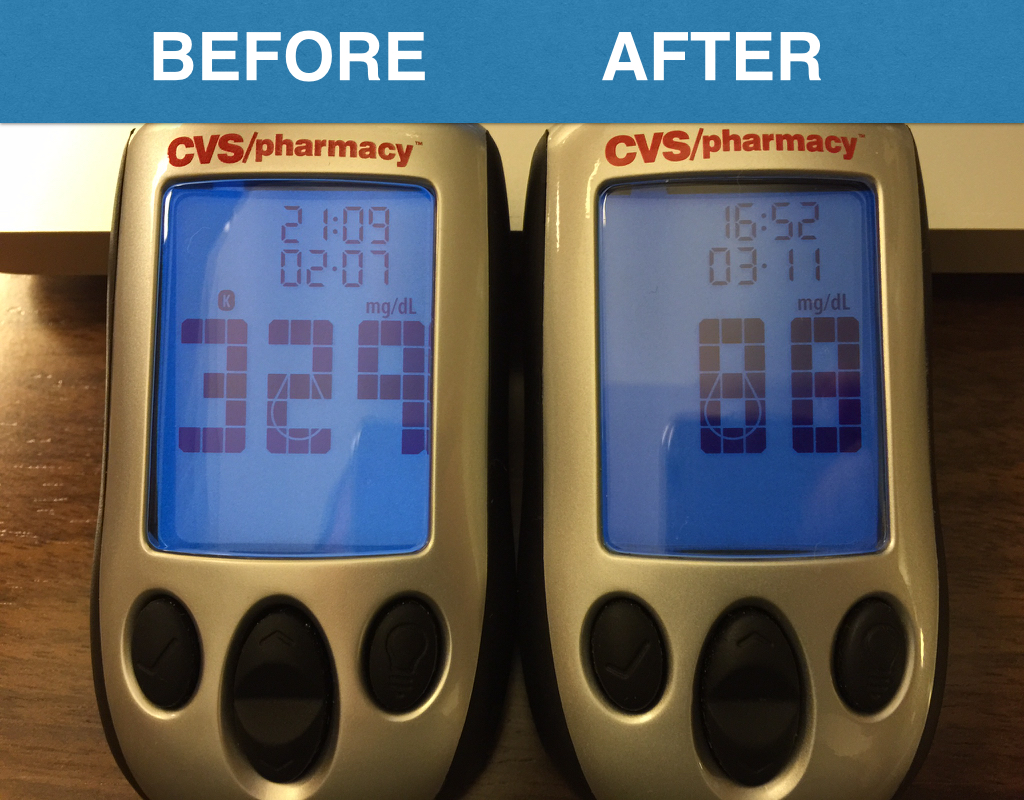Introduction
To the best of my knowledge, much of what you’re about to read has not been published or discussed anywhere. It’s based on my own personal research and experiences. I’m about to describe some serious failings in how we currently approach regulation of glucose levels and management of diabetes.
Disclaimer
This article is not meant to diagnose, treat, or cure. Contact your healthcare provider before making any significant changes to your exercise or diet. Everybody is different. What works for one person, may not work for another. The story below is from my own personal experience and interactions with doctors and isn’t intended to provide any conclusive statements about all doctors or the healthcare industry as a whole. These are general observations. Please be sure to read the important advisory at the conclusion of this article.
Most Glucose Readings are Inaccurate
People interested in tracking their blood glucose levels, who have experimented a bit, know that two readings taken at the same time can sometimes be as much 30 points apart. That’s a huge difference. It’s usually because of errors in how the testing is done. However, if you get two readings that are very similar, there’s a likelihood that the average of those two is close to accurate. It may take as many as three readings to know you have an accurate number.
At a cost of up to $1.40 per test strip, most people check their glucose once per day, in the morning, and get only one (probably inaccurate) data point for a 24-hour period. They are left not knowing if their blood glucose increases during the day, or if the morning reading is the highest level for the day.
Having an accurate reading at night and in the morning can help identify conditions such as “The Dawn Phenomenon” and “The Somogyi Effect.” (source)
With only a single morning reading, there’s no awareness about the actual glucose impact of different foods eaten, and no knowledge of how different exercises during the day impact blood sugar levels.
Despite the life saving insight that even just two samples per day could provide, for some reason, insurance companies only pay for one test strip per day.
Glucose Testing Made Financially Accessible
Recently CVS Pharmacy began selling their brand of glucose test strips for $22 per box of 100 strips retail price rather than $140 per box of 100 (what some of the insurance-preferred brand name test strip manufacturers charge). This has really shaken up the industry, and has people asking about the ethics of marking up essential healthcare products to make a 400% increase in profit when people’s lives are at risk.
Now, anyone with $22 can buy a box of 100 test strips and map out what’s causing their diabetes (or high glucose levels), then take corrective action to cure it. Companies trying to sell test strips at inflated prices are undoubtedly upset about this development.
Since I first started investigating and researching this, prices on glucose meter test strips have dropped substantially. Below are listings on Amazon from companies trying to drop their inventory at distressed price reductions of up to 82% off the previous retail price. Click any image for a larger gallery view.
What the Healthcare Industry Tells You
Ask just about any doctor about glucose testing, and they will try to convince you that you don’t need to pay attention to your glucose levels during the day “because the numbers fluctuate so much and are meaningless.”
Yet, anyone actually testing their own glucose levels will quickly learn how their body responds to various kinds of foods and exercises, and the impact of a sedentary lifestyle becomes measurable.
Positive results of varying degrees can be seen in a matter of hours, days, and weeks. Some exercises have a greater impact than others. Depending on the carbs, sugars, glycemic index, and your own unique metabolic processes, different foods will impact your glucose levels differently.
All of this can be learned by strategically performing your own glucose testing.
Clinical Research for $1 Per Day
We’re talking about in-home clinical research that’s about as complicated as an elementary school science project and costs about 45 cents to $1 per day, and it could save lives. Yet, even with the recent 85% drop in cost (for the CVS test strips), insurance companies refuse to pay for it and most doctor’s don’t suggest it.
The fact is that most people are on their own with regard to predictive and preventative care. Even if you go to an integrative medicine doctor, most insurance companies won’t cover exploratory procedures and preventative treatments.
So, in the case of blood sugar management, if you’re wanting to test frequently, you’ll probably need to pay with your own money to get a glucose tester and test strips, because in some cases insurance companies will only cover the cost of brand name testers, and even then they only cover one test strip per day.
It’s up to each individual to clinically study and learn about their own health conditions to develop a personalized wellness regime. This doesn’t mean that you give up on medical care entirely. It means that you dig deeper to learn more about yourself.
Any health plan should be done in collaboration with an practitioner of integrative medicine, and it’s good to continue with a traditional doctor for whatever minimal care is offered by the insurance companies.
Danger! Call your doctor immediately!
About a month ago, my glucose levels were reaching over 300 as you can see in the reading below.

The standard medical advisory for readings this high is: “Danger. Call your doctor immediately.” (Source: University of Washington)
I was alarmed. I knew I had to do something. So, I did, and below you can see the results before and after about 30 days later.

Background
I should share some of the background leading up to my high glucose reading. By the way, when I saw the reading above of over 300, I didn’t call my doctor immediately.* Here’s why…
For many years I’ve been periodically testing my blood sugar levels. Year after year, they were normal.
In the fall of 2013, I’d started using a protein drink mix called Muscle Milk. I created a video about the experience. The protein drink does what it promises. It produces amazing levels of energy and strength. However, in the process, it seemed to raise cholesterol, blood pressure, and blood sugar levels.**
However, I didn’t realize what was going on with my health, until several weeks into using the product and I had my annual physical. The doctor immediately declared me to be a diabetic, wanted to put me on high blood pressure medication, and was alarmed about my cholesterol levels. I was really surprised since I’d not previously had trouble with my blood sugar being high. Yet, it was close to 140 according to the lab work. That’s the highest I’d ever seen it.
I explained that I’d been using a nutritional supplement that I suspected had skewed the lab results. I asked if we could wait on the high blood pressure medicine. The doctor reluctantly agreed to wait on the high blood pressure medicine, but insisted that I take Metformin to help regulate my blood sugar.
I thought to myself, “What could go wrong?”
Well, here’s what went wrong.
I started taking the Metformin prescription and noticed my blood sugar levels were increasing. Every few days the numbers were higher. Soon my blood sugar levels were up to 180, then 220, then one day they reached 285 while on the Metformin. “This is crazy,” I thought.
I immediately stopped taking Metformin, and did some online research. I read that “patients taking metformin can also experience high blood sugar.” (source) I’m glad I’d been checking my blood sugar regularly rather than once per day in the morning. Otherwise I might have been unaware of the danger I was in.
For me this was just another disappointing experience where I was trying to play by the rules, and doing what the doctor had ordered, and my condition became worse.
It took me months to bring my blood sugar levels back down. Without much provocation at all, they’d be back up again. The extreme reaction I was having to foods high in sugars and carbs was alarming, but it allowed me to have a very sensitive measurement tool to evaluate a lot of different foods.
Using my own body as a research lab, I tested various foods and exercises to learn more about their impact on glucose levels. By February 2015, the testing was over. It had to be. Eating a typical American diet was resulting in blood sugar levels of over 300.
I gathered all my research from the past year of testing, and put it all to work. The result was a return to normal levels in about 30 days.
I’m going to publish more details about my findings in the coming weeks.
To learn more, read the health section of my March 2015 news update.
Video
Below is an video I discovered on 26 March 2015 (after writing the article above) that seems to confirm some of my own findings. In the video, Dr. Attia states, “I dream of the day when our patients can shed their excess pounds and cure themselves of insulin resistance because as medical professionals we’ve shed our excess mental baggage and cured ourselves of new idea resistance sufficiently to go back to our original ideals. Open minds. The courage to throw out yesterday’s ideas when they don’t appear to be working, and the understanding that scientific truth isn’t final but constantly evolving. Staying true to that path will be better for our patients, and better for science. If obesity is nothing more than a proxy for metabolic illness, what good does it do us to punish those with the proxy.”
Video Description: “As a young surgeon, Peter Attia felt contempt for a patient with diabetes. She was overweight, he thought, and thus responsible for the fact that she needed a foot amputation. But years later, Attia received an unpleasant medical surprise that led him to wonder: is our understanding of diabetes right? Could the precursors to diabetes cause obesity, and not the other way around? A look at how assumptions may be leading us to wage the wrong medical war.”
__________
*Advisory. In the experience I described above, I didn’t call my doctor immediately because it was the doctor’s previous advice (I believe) that put me in the situation I was in. I knew I had practices that could bring my blood sugar down. So, I implemented those. I’d read of people with blood sugar levels of 400, 500, or higher who were alive to write about it. There were varying opinions about the significance of a reading over 300. For anyone else in the same situation, I’d suggest that you do call your doctor if your blood sugar is elevated. Also, don’t stop medication simply as a result of reading this article, and don’t ‘experiment’ with foods to the point that they hinder your health. My experience was that the recommended glucose medication made things worse. That’s not necessarily the case with all prescriptions. It’s an exception.
**Disclaimer. The document describes the impact of Muscle Milk as a personal experience and not necessarily as a broad statement about the product and how it might impact a majority of people.
Document History
- 6 Apr 2023 — Document formatted to use the WordPress block layout standards.
- 14 Mar 2015 — Document originally posted online.




